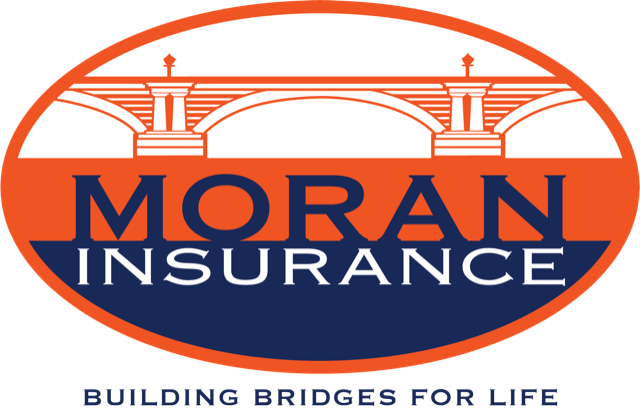- info@moraninsurance.com
- 410.544.3422
696 Ritchie Highway Suite 300 Severna Park, MD 21146
Flood
Let’s say the river near your home overflows its banks after an excessive rainfall, causing severe damage to your home and its contents. Because damages caused by floods are specifically excluded from all homeowners policies you would not be covered. You need to have a separate flood insurance policy in order to be covered.
Flood insurance is a very necessary coverage for those who live in flood prone areas, and even for those in low-to-moderate risk areas. However, it is important to understand that while homeowners insurance is designed to bring your home and its contents back to the same condition it was in before a loss, flood insurance is only meant to get you back on your feet. To understand more about how this coverage operates and what it covers, please review the following topics:
Please Note: This material is for informational purposes only. All statements herein are subject to the provisions, exclusions and conditions of the applicable policy. For an actual description of all coverages, terms and conditions, refer to the insurance policy. Coverages are subject to individual insured’s meeting applicable underwriting requirements.
Flood Insurance Offers:
- Building Coverage. Covers damage to your dwelling and items such as the furnace and water heater.
- Contents Coverage. Covers your furniture, rugs, appliances, and clothing (subject to limitations in basement areas).
- Property Protection. Pays for sandbagging and other expenses for preventing flood damage.
- Clean-Up Reimbursement. Covers costs of cleaning your home and removing debris after a flood.
What is a flood?
“Flood” is defined as a general and temporary condition of partial or complete inundation of normally dry land areas from:
- overflow of inland or tidal waters,
- the unusual and rapid accumulation or runoff of surface waters from any source, or
- mudflows caused by flooding.
Waiting period rules
There is a standard 30-day waiting period for new applications and endorsements to increase coverage. The effective date of the new policy will be 12:01 a.m. local time on the 30th calendar day following the application and premium payment date. The exception is for insurance purchased as a condition for a mortgage loan. In that case, the flood insurance is effective on the date of the closing.
Coverage availability/limits
Flood insurance is catastrophic insurance, which means there are limits on how much insurance will be provided. For example, residential buildings can only receive up to $250,000 in coverage, non-residential buildings only $500,000. Contents within the home are also limited up to $100,000 for residential ($500,000 for non-residential) locations.
What’s covered?
Direct physical losses by flood are covered. Also covered are losses resulting from flood-related erosion caused by excessive waters accompanied by a severe storm, flash flood, abnormal tidal surge or the like, which result in flooding. Damages due to mudflows, if caused by flooding, are also covered. Coverage is provided for flood damage to the building itself. This includes foundation elements, as well as posts, pilings, piers or other support systems for elevated buildings. Coverage is excluded for:
- Most buildings located entirely over water (like boat houses),
- Structures other than buildings (such as fences, retaining walls, swimming pools, underground structures), and
- Items like walkways, decks, driveways and patios located outside the building.
Coverage is also available on an actual cash value basis for the contents (your personal possessions) located inside the building. However, it’s very important that you know that coverage on valuable items (such as artwork, rare books, jewelry and furs) and personal property used in business is limited to only $2500. (A Valuable Items Policy will protect your most treasured possessions from many perils, including floods.).
Limited coverage for basements and enclosed areas beneath the lowest floor.
You need to be aware that flood insurance only provides limited coverage for these areas. Coverage is available for equipment necessary to the habitability of the building such as utility connections, sump pumps, well water tanks and pumps, fuel or water tanks, furnaces, clothes washers and dryers, food freezers and air conditioners. Clean up expenses are also covered. Likewise, basement dry walls (unpainted), sheet rock walls (including fiberglass insulation) and ceilings are covered. However, finished structural elements (such as paneling and linoleum) and contents (such as rugs and furniture) in basements and enclosures are not covered.
Replacement cost versus actual cash value
Here’s an extremely important point. Replacement cost coverage (which pays to replace or restore structure items) is only offered on a limited basis…and only for a single-family dwelling that is your principal residence. To receive replacement cost coverage on the structure, you must be insured for at least 80% of the building’s replacement cost at the time of the loss or the maximum amount of coverage available, whichever is less.
Contents losses are always adjusted on an actual cash value basis. That means that you only receive what the item was worth as of day of the loss.
Deductibles
Please be aware that with flood insurance your deductible will be applied to both your building and its contents, even though they might be damaged by the same flood.


